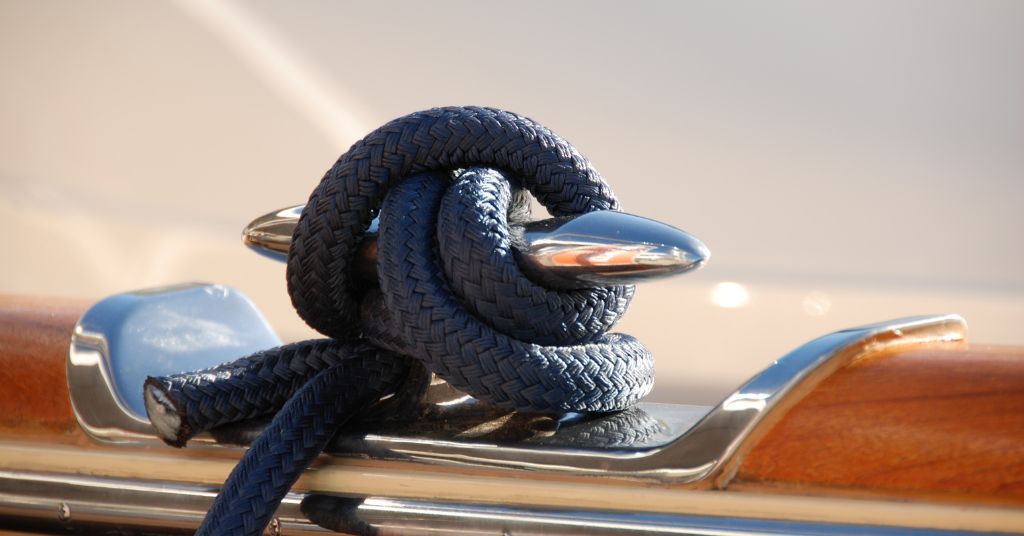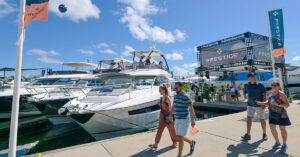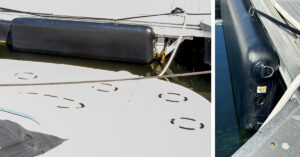Navigating tidal shifts is crucial for docking your vessel safely. Tides, driven by the moon’s gravity, can significantly impact the water levels near your docking area. Knowing how to use dock lines effectively in these conditions is essential for ensuring maximum safety and minimizing potential damage.
Understanding Tidal Shifts
Tidal shifts, the natural rise and fall of sea levels caused by the gravitational forces of the moon and the sun, can dramatically affect the safety and positioning of your docked vessel. In South Florida, king tides—the highest tides of the year—occur annually between September and November, with peak tides often occurring in October and November. These exceptionally high tides can raise water levels by several feet, leading to “sunny day flooding” even without rain. Such extreme tides present additional challenges for boat owners.
The Importance of Proper Dock Lines
Dock lines are critical for securing your boat to the dock and protecting it from damage caused by tides, currents, and wind. Using the right dock lines and tying techniques is crucial, especially when the tide recedes, leaving boats at risk of hanging from the dock, or worse, being crushed under it when the tide returns.
Choosing the Right Dock Lines
Selecting the appropriate dock lines involves considering the material, length, and diameter suitable for your boat and the local tidal conditions. AERÉ Marine offers high-quality nylon dock lines designed for durability and ease of use, with some featuring built-in chafe protection for long-lasting performance.
How to Properly Tie Your Boat for Changing Tides
Securing your boat effectively in tidal conditions requires not only proper dock lines but also high-quality fenders, such as those from AERÉ Marine. Here’s how to ensure your vessel remains safe as tides shift:
- Initial Positioning your AERÉ Fenders: Start by placing your fenders at key points along the side of the boat to prevent contact with the dock as tides rise or fall. AERÉ fenders are well-known for their durability and cushioning ability, reducing the risk of hull damage during tidal changes.
- Bow and Stern Lines: Instead of tying your lines to the nearest cleat or piling, extend them farther down the dock, creating longer angles. This approach allows the boat to rise and fall naturally with the tide, preventing the need for slack while providing stability.
- Spring Lines: These prevent the boat from surging forward or backward. Attach one spring line from the bow to a dock cleat toward the stern, and another from the stern forward. AERÉ’s fenders further minimize the risk of the boat hitting the dock during these shifts.
- Adjustable Knots: Utilize adjustable knots, such as the clove hitch and rolling hitch, which allow for quick changes in line tension and length as water levels fluctuate.
- Regular Monitoring and Adjustment: Always check and adjust the positioning of your fenders and the tension of your dock lines in response to tidal changes to ensure optimal protection.
Seasonal and Geographic Considerations
Understanding the specific tidal patterns of your docking area is crucial. Some locations experience semi-diurnal tides (two high and two low tides each day), while others might have diurnal tides (one high and one low tide each day). Seasonal changes can also influence tidal levels, which should be considered when planning your docking strategy. In certain regions, king tides—exceptionally high tides—can further elevate water levels. Be mindful of whether your area experiences king tides, and consult local tide charts to stay informed
Conclusion
Mastering the art of tying your vessel with proper consideration for tidal shifts is a crucial skill for any boater. By using AERÉ Marine’s high-quality fenders alongside your dock lines and employing the right tying techniques, you can ensure that your vessel remains secure and undamaged, regardless of shifting tides. Remember, adaptability and regular adjustment are key to effective docking in tidal areas.









